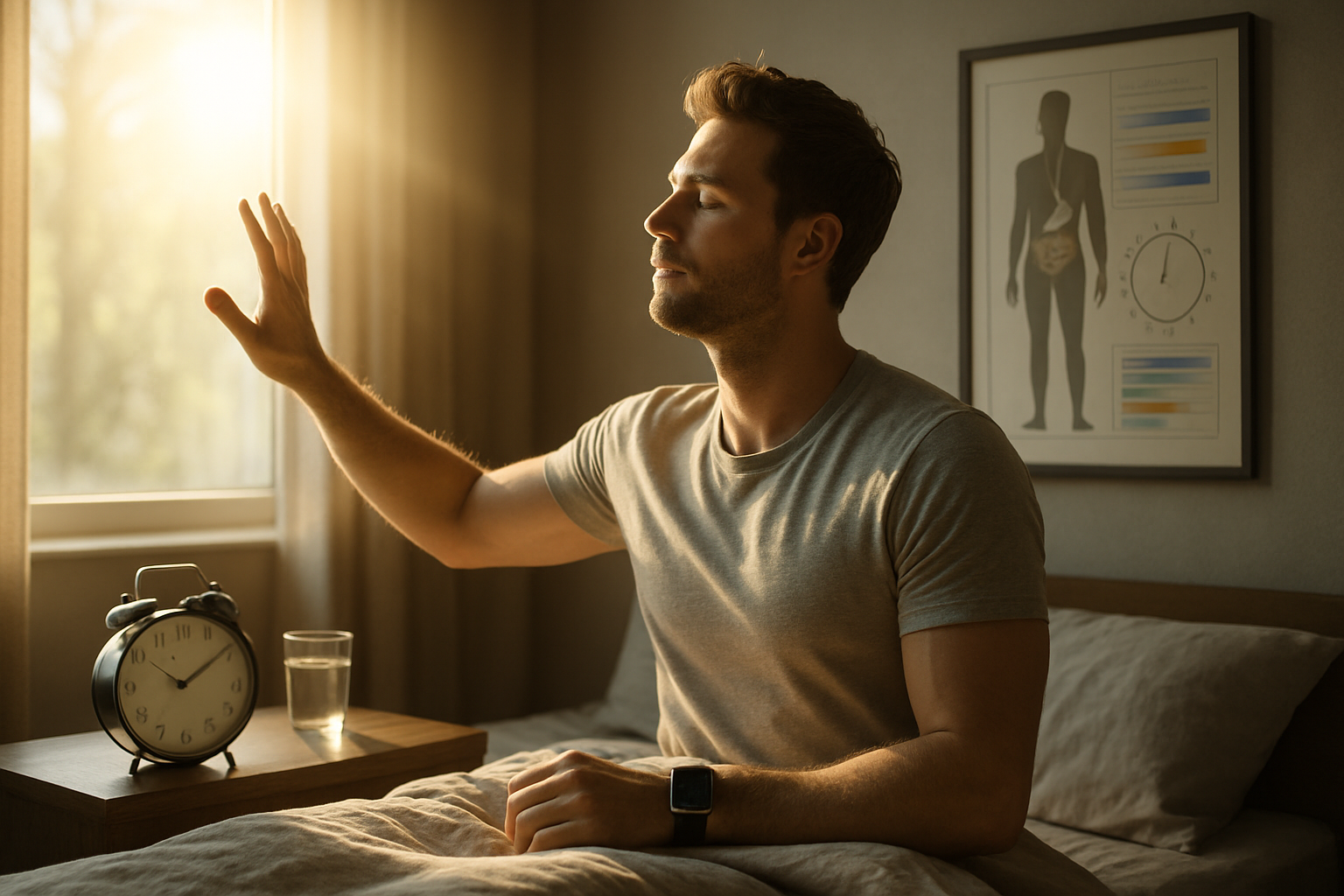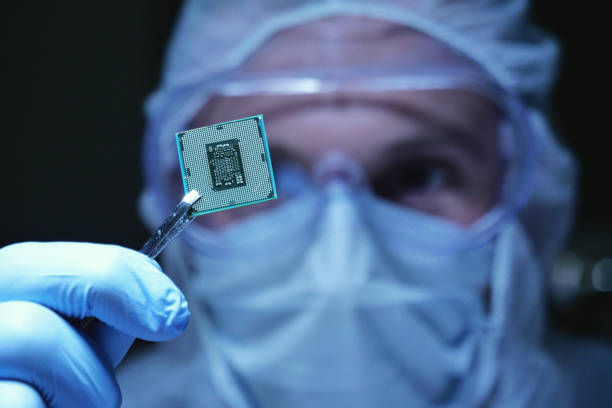Biohacking Your Circadian Rhythm: The Next Frontier in Wellness
Imagine waking up each morning feeling refreshed, energized, and ready to conquer the day. What if you could optimize your body's natural cycles to achieve peak performance, enhance your mood, and boost your overall health? Welcome to the world of circadian rhythm biohacking – a cutting-edge approach to wellness that's revolutionizing how we think about our daily routines and biological clocks.

Understanding the Circadian Symphony
Our bodies are governed by an intricate system of biological clocks, with the master timekeeper located in the brain’s suprachiasmatic nucleus. This central clock orchestrates a complex symphony of physiological processes, from hormone production to body temperature regulation, all following a roughly 24-hour cycle. The circadian rhythm influences nearly every aspect of our biology, including sleep-wake patterns, metabolism, immune function, and cognitive performance.
Research has shown that disruptions to our circadian rhythm can have far-reaching consequences. Studies have linked circadian misalignment to increased risk of obesity, diabetes, cardiovascular disease, and even certain types of cancer. By understanding and optimizing our internal clocks, we can potentially mitigate these risks and enhance our overall well-being.
The Science of Light Exposure
One of the most powerful tools in circadian rhythm biohacking is strategic light exposure. Our circadian system is exquisitely sensitive to light, particularly blue light wavelengths. Morning exposure to bright, blue-rich light helps reset our internal clocks and promotes alertness. Conversely, evening exposure to blue light can disrupt our natural wind-down process, making it harder to fall asleep.
Innovative light therapy devices are now available that can help regulate our circadian rhythms. These range from specialized light boxes that simulate dawn to smart bulbs that automatically adjust their color temperature throughout the day. Some biohackers even wear blue-light blocking glasses in the evening to protect their natural melatonin production.
Chrono-Nutrition: Eating in Sync with Your Body Clock
Emerging research in the field of chrono-nutrition suggests that when we eat may be just as important as what we eat. Our digestive system, like other bodily functions, operates on a circadian schedule. Studies have shown that consuming meals at consistent times each day can help synchronize our internal clocks and optimize metabolic health.
Time-restricted feeding, a form of intermittent fasting that aligns eating windows with our circadian rhythms, has gained attention for its potential health benefits. Early research indicates that this approach may improve insulin sensitivity, reduce inflammation, and support weight management. However, it’s crucial to note that the optimal eating schedule may vary from person to person, and more research is needed to fully understand the long-term effects of chrono-nutrition.
Movement as a Circadian Regulator
Physical activity is another powerful tool for resetting our biological clocks. Regular exercise has been shown to strengthen circadian rhythms, improve sleep quality, and enhance overall health. However, the timing of exercise matters. Morning workouts can help kickstart our circadian cycle, while intense evening exercise may interfere with our natural wind-down process.
Some biohackers are experimenting with concepts like circadian strength training, where workout intensity and timing are tailored to align with the body’s natural hormone fluctuations. While more research is needed in this area, early anecdotal reports suggest potential benefits in terms of performance and recovery.
Temperature Regulation and Sleep Optimization
Our body temperature naturally fluctuates throughout the day, dropping slightly in the evening to prepare for sleep. Biohackers are exploring ways to leverage this natural cycle to improve sleep quality. Techniques like pre-sleep cooling, where the bedroom temperature is lowered or a cooling mattress pad is used, can help signal to the body that it’s time to sleep.
On the flip side, some individuals are experimenting with brief exposure to heat, such as saunas or hot baths, earlier in the day. This practice may help amplify the natural evening temperature drop, potentially enhancing sleep quality. As with all biohacking techniques, it’s essential to approach temperature regulation cautiously and consult with a healthcare professional before making significant changes to your routine.
The Role of Melatonin and Other Supplements
While lifestyle interventions form the foundation of circadian rhythm biohacking, some individuals also explore supplementation. Melatonin, often called the sleep hormone, is a popular choice for those looking to reset their sleep-wake cycle or combat jet lag. However, it’s crucial to use melatonin judiciously and under professional guidance, as improper use can potentially disrupt natural melatonin production.
Other supplements gaining attention in the circadian biohacking community include adaptogens like ashwagandha and rhodiola, which may help the body adapt to stress and regulate cortisol levels. Magnesium, known for its calming properties, is another popular choice for supporting healthy sleep patterns.
Circadian Rhythm Hacks for Optimal Wellness
-
Aim for consistent sleep and wake times, even on weekends
-
Expose yourself to bright, natural light within the first hour of waking
-
Avoid blue light exposure 2-3 hours before bedtime
-
Maintain regular meal times to support metabolic synchronization
-
Exercise regularly, preferably earlier in the day
-
Keep your bedroom cool and dark for optimal sleep
-
Consider using a sunrise alarm clock to simulate natural dawn
-
Experiment with relaxation techniques like meditation or deep breathing before bed
As we continue to unravel the complexities of our internal clocks, circadian rhythm biohacking offers exciting possibilities for optimizing our health and well-being. By aligning our daily habits with our body’s natural rhythms, we can potentially unlock new levels of energy, productivity, and overall wellness. However, it’s important to remember that everyone’s circadian profile is unique, and what works for one person may not work for another. As with any wellness approach, it’s crucial to listen to your body, start slowly, and consult with healthcare professionals when making significant lifestyle changes. The future of wellness lies not in fighting against our natural rhythms, but in harmonizing with the elegant symphony of our internal clocks.





